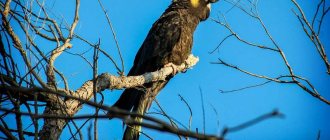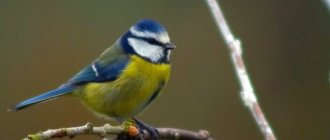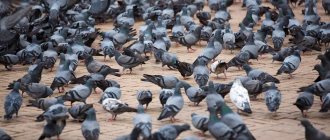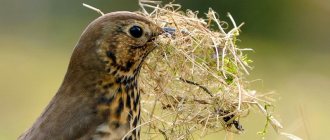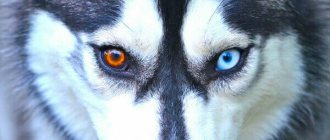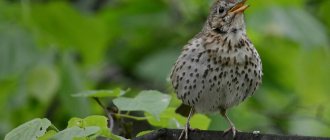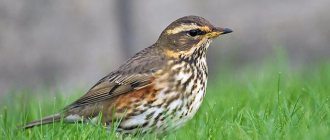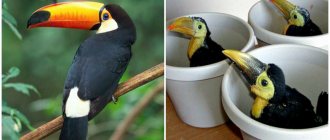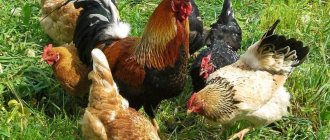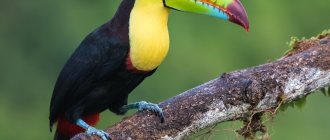The thrush bird can compete in the beauty of its chirping with the more famous forest singer - the nightingale. Relatively recently, these creatures settled exclusively in clean forest thickets, but now they can be found in well-groomed park areas, where they can find the required amount of food.
The thrush bird can compete in the beauty of its twittering with the more famous forest singer - the nightingale
It is worth noting that thrushes are a large family, including 62 species, differing in habitat, color and method of obtaining food. Only 20 species are found in the CIS. This bird is common, but many people have no idea what a blackbird looks like.
However, it is difficult to find someone who has not heard his excellent, lush singing, which is especially pleasing to the ear in the spring.
Appearance of blackbirds and their distribution
Blackbirds are relatively small birds. Depending on the species, these creatures can reach 20-25 cm in length. Body weight usually ranges from 100 to 180 g. All representatives of the thrush family are characterized by a short beak of gray or bright yellow color. The eyes are usually black. Most species of these birds are distinguished by their modest plumage color.
For example, the most common songbird or gray thrush in Russia has a chocolate-gray head and back. The sides of the bird are usually yellowish. The breast is lighter in color with brown spots. Representatives of both sexes have plumage similar in color.
DIGITAL CAMERA
The blackbird is no less common than the songbird. Females forced to stay in the nest for a long time have a very mild grayish-beige plumage color. It allows the bird to remain invisible to natural enemies. Males of this species are similar in appearance to jackdaws. The black plumage is probably necessary for the bird to impress its mate during the breeding season.
The blackbird's image is complemented by its bright orange beak. This coloring remains with the bird all year round.
Relatively recently, these creatures settled exclusively in clean forest thickets, but now they can be found in well-groomed park areas, where they can find the required amount of food
The Pied Thrush lives up to its name exclusively during the breeding season. At this time, males acquire bright plumage. In birds at this time, the head is grey-blue, the abdomen and tail are orange, and there is a white stripe on the back. During the winter, they change their plumage and begin to resemble females, characterized by modest gray-gray plumage.
The clutch of blackbirds: why it has different shades
Naturalists have long noticed that thrush eggs can be blue, with a blue or green tint, with specks or without dots on the shell. Many nature researchers were surprised by this feature. In the process of evolution, the color of the bird's clutch should have become less bright, so that predators could not notice from afar, and after a while, destroy the nest. Nevertheless, the bright color has been preserved, and the shade options depend on the species of the bird.
The body of a female that lays bright eggs is forced to synthesize blue, blue or green pigment (biliverdin), using part of its own hemoglobin as a basis. As a result, during the formation of eggs, the concentration of protoporphyrin, which is responsible for the color of the shell, increases.
According to scientists, this process allows the shell to reflect ultraviolet radiation and minimize its harmful effects on the DNA of the future chick. In this case, the embryo receives enough heat for development, without the risk of overheating.
Despite these advantages, bright masonry is a real test for birds. Parents have to constantly protect the eggs from attacks by predators.
Gallery: blackbird bird (25 photos)
What other birds are known for colored eggs?
The finch is a bird that delights people with its singing, similar to the trills of a nightingale. Distributed in forests and parks of the Russian Federation and many European countries. The bluish or reddish clutch with a green tint is incubated alternately by the female and the male. Purple spots are also visible on the shell.
Known for their mockingbird talent, starling birds lay light blue eggs. They are mainly incubated by the female, the male gets food and can sometimes replace his chosen one on the clutch during the nesting period. The chicks hatch after a dozen days.
Behavior of blackbirds in the natural environment
In their natural environment, these birds pair only for one season. The birds arrive at their nesting sites at the end of April, when the weather is warm enough for them. The males attract the female with their beautiful singing, which can be heard for several kilometers in the forest thicket. After pairing, the birds work together to build a home for future chicks.
Typically, nests are arranged:
- in tree hollows;
- on bumps;
- stumps;
- branchy bush.
On rare occasions, bird nests can be seen on the ground. Typically, thrushes try to settle along floodplains of rivers, as well as near small clearings, where they can find more food.
The nest of these birds is usually small. Birds weave it from small twigs. The inside of the nest is always reinforced with clay. Inside it is lined with last year's soft grass. Often, when building a nest, birds use soft moss, fluff, small roots, etc.
Organic Farming Club
However, the colorful, fashionable eggs of some songbirds, including the blackbird, are an undeniable fact that scientists have long been trying to explain.
Obviously, the blue color of the eggs must be an advantage that outweighs the increased risk of the clutch being discovered by a snake, marten or hedgehog. The most common theory among ornithologists today is that the blue pigment in the shell serves as protection from the sun for blackbirds.
Some songbirds lay eggs of different colors and shades - from white to bright azure. This is what made it possible to determine exactly how the shells of eggs of the same species, but of different colors, conduct sunlight. It turned out that the blue pigment reflects ultraviolet radiation, which is harmful to DNA; however, at the same time, the blue shell absorbs that part of the infrared rays that heat the contents of the egg, accelerating embryonic development, which leads to a number of other problems.
The conclusion is this: the blue color of nest eggs is the result of a delicate balance between the desire to protect from UV rays and not to overheat the egg; This strategy only works in certain climates, and even then not in every case - which is why some birds lay eggs of different colors.
I was choosing colors in Yandex and couldn’t help but share my discovery:
What color are your eggs?
This is my first post, do not judge strictly, please.
Every year a large colony of blackbirds settles in the forest belt. White-browed thrushes (Turdus iliacus) and fieldfare thrushes (Turdus pilaris) live there In summer and autumn they will make devastating raids on the surrounding gardens, and now they are setting up nests, laying eggs and hatching chicks. These are quite noisy and scandalous birds: they try to drive away any potential enemy who enters their territory with the whole flock: loud squawking, flapping their wings, and if all these methods do not help, then targeted fire with droppings. You can often see them driving away crows in this way. Any person passing along the path also causes loud panic. But I’m still a reasonable person, and this behavior of birds, on the contrary, unmasks their nests. It seems like I’m just walking along the trees, in one place the screams suddenly intensify, I look around - and there it is, a nest! As if I wasn’t looking for it on purpose, they slipped it in. Fieldfares have nests high, in the forks of trees, on thick branches, twisted from blades of grass and fastened on top with dirt, while white-browed nests are built low, no higher than a meter, on old stumps or half-fallen branches, or even on the ground. I pass by, one of the parents flies up from the nest, swears like a blackbird from nearby branches, and I can’t contain my curiosity, I look into the nest for a second. Here they lie, 5 neat eggs, slightly smaller in size than a quail’s. And not “blue as a blackbird’s eggs,” as the song says. The color of the eggs is greenish-bluish, with grayish-brown speckles. And a week later, in these same nests, the newly hatched chicks lie, still pink, naked, with huge closed eyes. And just along their backs, like some small dinosaurs, they have a mane of white down. For now, they just sometimes change their position and yawn, but soon they will begin to actively open their beaks and squeak, demanding food from their parents.
Keeping and breeding blackbirds in captivity
Some species of these birds are suitable for keeping at home. Song thrushes that were born in captivity get used to humans faster. A bird caught in the forest should not be kept locked up. A large cage is suitable for keeping a song thrush. It must contain a suitable sized perch, toys, drinking bowls and a house. This is very important, as birds sometimes need privacy.
In captivity, the thrush eats:
- mealworms;
- pulp of fruits and berries;
- porridge;
- bread;
- grated vegetables;
- cottage cheese.
Blackbirds living in captivity rarely breed. As a rule, it is possible to achieve only 2-3 offspring from a couple. In captivity, with proper maintenance and the creation of the necessary conditions, the average life expectancy of song thrushes is about 12 years.
Natural enemies
Arrogant crows often destroy thrush nests and steal their eggs. Natural enemies include woodpeckers, squirrels, jays, owls and birds of prey. Humans also pose a significant threat to the lives of birds.
Interesting moment! Blackbirds get along well next to defenseless birds such as finches and flycatchers. Oddly enough, blackbirds help these birds drive away their natural enemies from their nests.
Nutrition
It feeds on insects and plant fruits. Diet preferences depend on the availability of a particular product at a certain period of the year: for example, in early spring, the diet consists of more than 90% animal food and less than 10% plant food, and in the fall these values change places [15]. Among insects, it eats ground beetles, butterflies, and weevils ( Curculionidae
), lamellar beetles ( Scarabaeidae
), ants, click beetles (
Elateridae
), etc. The plant diet is dominated by berries of cherry, dogwood, sumac, blueberries, raspberries and blackberries[15]. In search of food, it runs across the lawn and periodically pauses, listening to extraneous sounds in the grass; or collects fallen fruits.
Source
- ← school bus color code
- colorful dresses in fashion →
Caring for chicks
Proper care depends on the age, health, and specific species of thrush. A chick that has just found itself at home will eat more than one that is already accustomed to people.
The females of these birds have a huge appetite when laying eggs. They must be provided with plenty of animal food. This food should also be given when birds are sexually active.
In addition to the correct diet, it is very important to do special treatment against various parasites that attack the chicks while they are still in the nest. Special medicines and solutions for parasites are sold in veterinary pharmacies
Preventive treatment with special anti-parasitic solutions is not correct, as it can expose the chick to stress. If the small thrush does not yet have enough feathers, then you need to provide it with warmth and heat the room to 28 degrees. You can warm the chick with a heating pad wrapped in a clean, soft towel.
Ways to drive blackbirds away from your summer cottage
The main condition for successfully repelling blackbirds in summer cottages is frequent changes of scenery or their active repellent effect. There are not many effective methods for driving away blackbirds from a summer cottage:
Imitation of the presence of people on the site, for which they place stuffed animals in bright clothes, lay out things, for example, for tea drinking. The decorations should move once a day, then the birds do not begin to perceive them as part of the decorations of the garden or vegetable garden. Proactive actions directly affect efficiency. Birds are afraid of any noise effects, so you can install any homemade noise makers from cans to ratchet propellers. The main disadvantage of such devices is their ineffectiveness in the absence of wind, so experienced gardeners and gardeners replace homemade ones with more modern electronic devices. Nozzles are often combined with other repellent devices, because... their effectiveness depends on the surprise of the sound and its volume, which can also cause inconvenience to people. An equally effective method is to decorate a summer cottage with old things that may seem dangerous to birds. Thus, old fur hats attached to the lower branches of trees remind blackbirds of cats, which are a natural dangerous enemy
Decorations of birds of prey and animals that can be collected from old things and improvised means are very effective, and complete repetition is not so important, but on the contrary, the similarity of the silhouette with a bright, noticeable color is important. Glitter from Christmas trees, old CDs and other shiny objects in the sun signal danger to the birds, and the wind is sure to move them, so the decorations remain in motion. The “industrial or civilized” method is considered to be the use of fine mesh nets as protective equipment
The nets are draped over trees and also attached to guy wires over areas that might be devastated by blackbirds. The technique is not entirely aimed at scaring away blackbirds from a summer cottage, but it is very effective, although it requires significant investment to purchase a net. A fine mesh net must be used, otherwise the bird will be able to get to the crop or may become entangled in the mesh, which will certainly lead to death.
The maximum effect can be obtained by combining sound effects and the shine of hanging objects. Modern deterrent methods include ultrasonic devices and propane guns. But each device requires regular supervision, especially the propane gun, which runs on liquefied gas, creating quite powerful pops according to the program. Compliance with safety regulations is mandatory, so such dangerous devices are not always convenient.
Mineral feed
Being in natural conditions, blackbirds replenish mineral and vitamin components by using special supplements. Birds use river sand or small stones to grind various roughages. You can also use similar supplements at home to help ensure proper metabolism. Chicks need to be given carrots to provide carotene, as well as egg shells, chalk, and coal for strong bones.
It is necessary to give thrushes a variety of berries, which are dried in advance in sunny, ventilated areas. To strengthen the bird's immunity, you should give it honey or special tablets of vitamins and minerals, adding them to the water. In addition, at the veterinary pharmacy you can purchase ready-made mineral-vitamin complexes and give them following the instructions, because an excessive amount of vitamins and minerals can cause significant damage to the health of the bird
Description
A small songbird with a length of 20–28 cm, a wingspan of 31–40 cm and a weight of about 77 g[2]. The physique is rather dense, somewhat reminiscent in shape of the fieldfare ( Turdus pilaris
)[3]. The plumage of the head, wings, upper body and tail is dark gray or black. The chest and belly are orange-red and stand out in contrast to the dark top. The throat is white, with numerous black spots. The undertail and lower tail coverts are off-white. There is a broken ring of white feathers around the eyes. In newly moulted males, white tips can be seen on the feathers. The beak is thin, yellow in color, somewhat darker in winter. The tail is relatively long, covered with white spots at the corners. The female has slightly paler plumage, especially in the head area, but is generally similar to the male. Young birds resemble females[4] in plumage; their beaks are darker in the first year of life. Wandering thrushes are the largest representatives of thrushes on the American continent.
Key Features
Most often you can see or hear the song thrush here. He has long legs, so these birds walk straight, but fly quickly and in a straight line. If you see brownish feathers on the wings from below, you know that you are lucky enough to meet the famous feathered singer.
The song thrush eats mainly on the ground and moves in leaps: crouched - jumped, crouched again - jumped again. When he stops, he thoughtfully tilts his little head to the side, listening to see if the enemy is coming. But in fact, this is how he tries to see where the worm or bug is - his eyes are not in the front, but on the sides of his head.
Thrush chicks are very voracious. The parents, having collected a bunch of earthworms and caterpillars, fly to the nest and feed their brood there. Blackbirds actively hunt for food only when feeding their chicks. The rest of the time they feed occasionally, and spend most of the day resting, preening, and singing in the evenings and nights.
Hens laying colored eggs
Farms are increasingly raising not only the usual breeds of chickens, but also exotic laying hens “Easter surprises” in blue, green, and bluish shades. One of them is Araucana - a chicken that lacks a tail and caudal vertebrae. Another feature by which the breed standard is determined is the unusual plumage on the head.
Ameraucans lay colorful eggs (up to 250 eggs per year). This breed has a second name - “Easter chickens”. More productive laying hens are Legbar chickens (up to 350 pieces per year). It is important to ensure that they do not overeat and exercise a lot, because obese birds will not lay eggs. Farmers also talk kindly to them and make sure they have vitamins in their diet.
